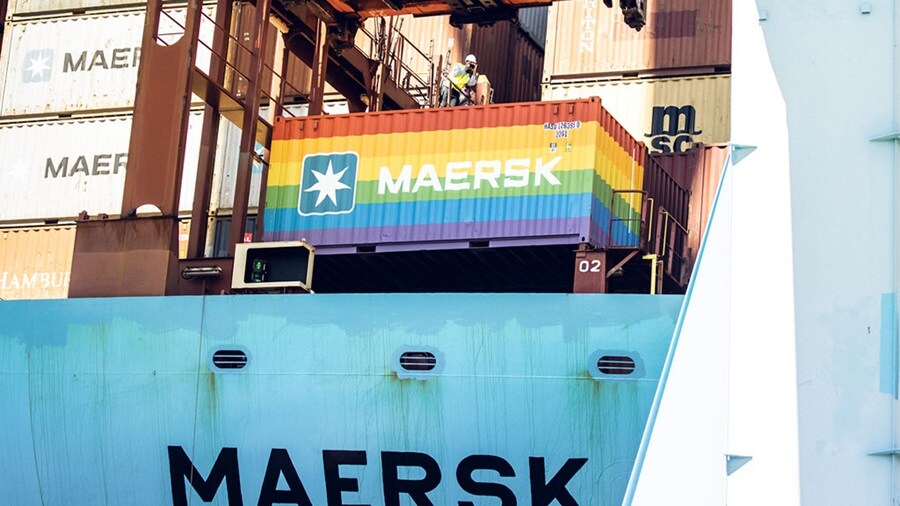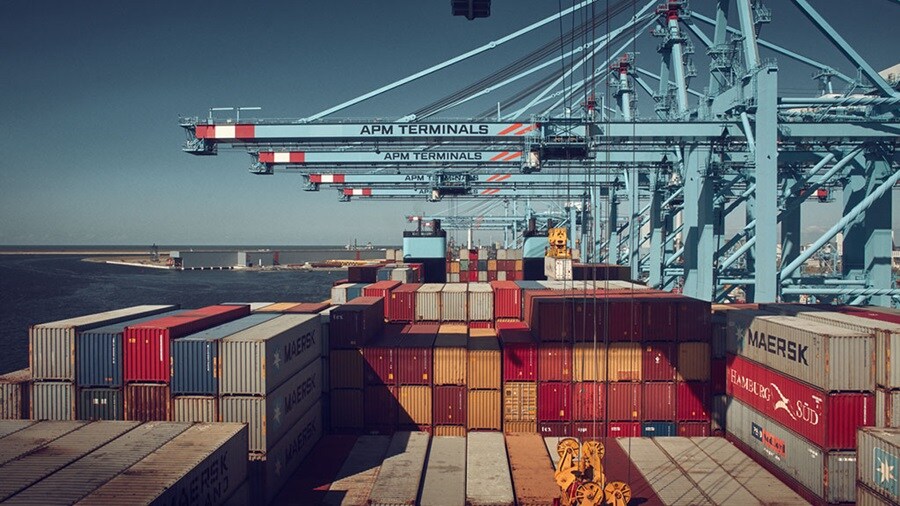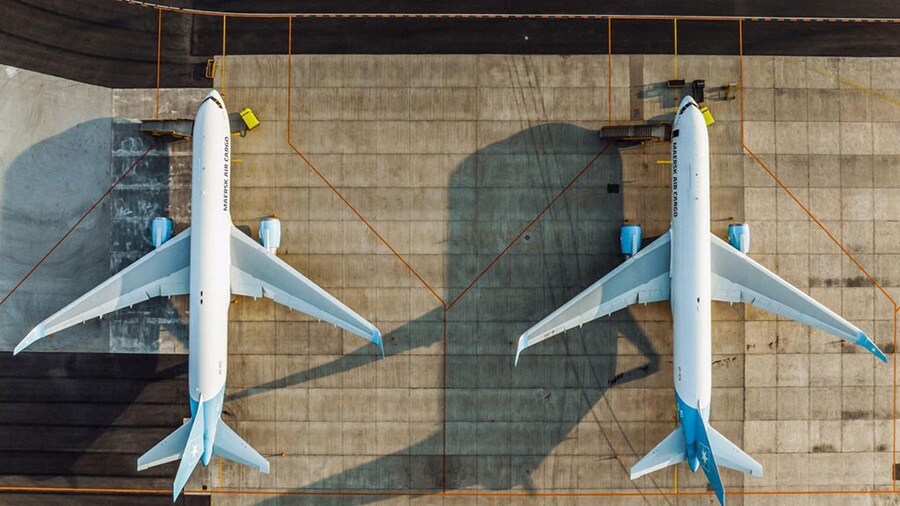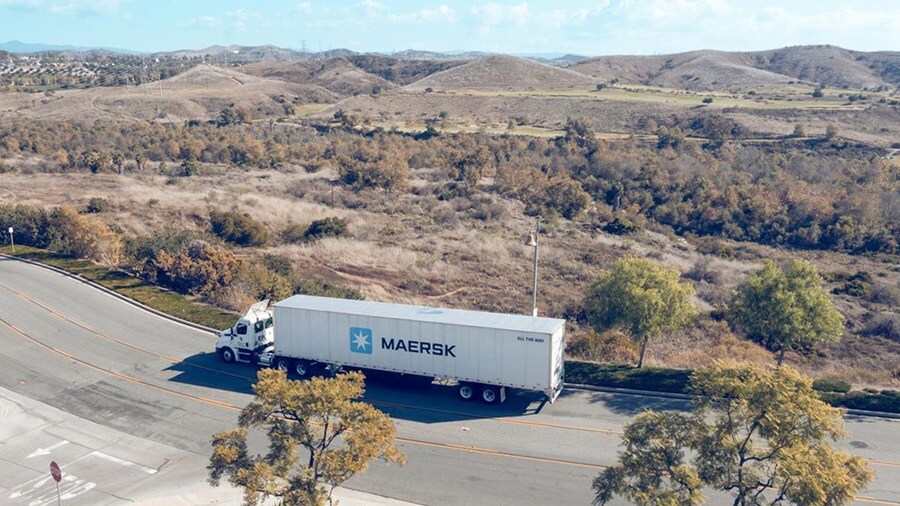Ocean Update
Maersk teams are continuing to keep a close eye on developments around the Red Sea / Gulf of Aden. As the security risk remains highly elevated, vessels previously bound to transit the area continue to be diverted south via the Cape of Good Hope.
With complications expected to persist and keep causing disruption, Maersk has implemented a number of network changes in order to bring more predictability and stability to our customers’ supply chains. Please click here to view the adjustments in full and feel free to reach out to your Maersk representative should you need any assistance with planning.

We are currently observing a shift in sourcing patterns to markets that are not directly impacted by the Red Sea situation, specifically a stronger demand from Europe into North America and within the intra-European market. Unexpected demand is naturally leading to capacity constraints, which our teams are working on combatting with specific action plans. We will reach out to affected customers with details as soon as possible.
This change in flow patterns has also created a shortage of equipment across the industry, particularly within the reefer market. To ensure the circumstances cause as minimal delays as possible, Maersk is increasing its focus on empty container repositioning and adding more equipment to the current pool.
Elsewhere, the ongoing Chinese New Year celebrations and subsequent factory closures have resulted in limited logistics activity across the country, which is expected to continue until the end of week 8. The drop in demand in the weeks after Chinese New Year has also resulted in average market capacity adjustments of 25%. We will adjust our schedules accordingly and spread changes in a balanced way in order to minimise the impact on our customers.
Key Ports Update
As mentioned above, part of Maersk’s Red Sea / Gulf of Aden contingencies is the implementation of a revised network, which is awaiting the final alignments on windows across the hub terminals. To safeguard network integrity and cargo connections, the revised schedules will be available in GSIS, Maersk's scheduling system, in week 7.

All hub terminals in Europe are showing stable performance with good operational outcome, including Algeciras, where the terminal is seeing a minor yard density reduction due to planned yard repair work. In Rotterdam, there’s been an increase in yard density, which is preventing the terminal from accepting early deliveries. Customers are kindly asked to deliver full containers closer to the date of loading, and to pick up their import containers as soon as possible after discharge.
Weather conditions at this time of the year continue to pose challenges for terminal operations. Particularly in the north of Europe, terminals are seeing increasing instances of fog and wind, occasionally interrupting operations. We will continue to monitor the weather conditions across the whole continent and plan contingencies to ensure minimal disruptions to customers’ supply chains.
With the Easter holidays approaching in March, our teams are working on Easter contingency planning particularly for German ports that will face holiday-related closures in weeks 13 and 14. We will communicate plans with customers as soon as possible.
Air Freight Update
The global air freight market is reporting a strong start to the year, with demand in January up as much as 5% on the same period in 2023 (WorldACD) and capacity also up 12% to cater to such a rise.
The increase can be attributed to a number of factors, including the later start to Chinese New Year in 2024, however the ongoing disruption in the Red Sea and subsequent need for air freight solutions is seen as the primary reason.
Businesses worldwide are continuing to seek alternative transport in order to mitigate supply chain disruption, predominantly with time-sensitive cargo. In light of the growing demand, Maersk has secured a range of offerings across the world, including the well-established sea-air and air-sea products.

Cargo from Asia can be discharged from vessels in either Dubai, Muscat or Salalah, before connecting with air freight to the desired destination in Europe or North America. Likewise, cargo heading east from Europe can use air freight into Singapore, then connect with vessels for the onward journey to Asia or Oceania.
We are seeing a lot of interest for such solutions as the market continues to grow, and we encourage customers to get in touch with their local representative to discuss options for their cargo. Please also click here to find more helpful information about our air freight network and services to and from Europe.
Elsewhere, with customs being a major contributor to supply chain delays, we recently went behind the scenes at Maersk’s air freight facility at Heathrow Airport to find out how customs clearance is a vital piece of the air freight puzzle in ‘Air is Essential’ episode three.
Inland Update
As European companies continue to reconsider their sourcing strategies - over 64% have changed the way they source materials as a result of global supply chain disruptions – new markets closer to the continent are opening up. At the moment, Morocco represents only 1% of the EU's total trade, but the North African country is becoming increasingly more popular as a sourcing location. Particularly truck transportation from Morocco into Spain has recently seen double-digit growth, which has in turn created pressure on the route.

To enable the trade route to grow in line with the demand, our teams have worked on finding synergies within the current network to identify where we can add solutions that are missing. Our new Morocco Bridge solution is a multimodal service that connects Morocco with Spain and the rest of Europe. The new solution combines rail and truck transport across Morocco, with an ocean shuttle from Tangier to Algeciras three times a week, and further multimodal solutions into the continent. Find out more about the Morocco Bridge.
In Belgium, farmer protests around Antwerp are currently impacting inland transportation, particularly flows to the terminals. Road blockages have led to congestions and as a consequence, terminals are seeing a reduced number of trucks arriving to the terminals.
Customers are kindly asked to plan their inland transportation options taking into account possible delays. Our teams continue to monitor the situation and will keep customers informed of any changes.
Customs Update
The European Commission has proposed extending trade support measures for Ukraine and Moldova, by suspending import duties and quotas on Ukrainian exports to the EU for another year.
The measures aim to assist Ukrainian producers and exporters in getting products to the rest of the continent, while Moldovan imports also have support due to the complications on transit routes. The new regime is targeted to start in June 2024 for Ukraine and July 2024 for Moldova. Find out more information here.

Elsewhere, the first CBAM (Carbon Border Adjustment Mechanism) report of the year needed to be submitted on 31st January 2024, however businesses can apply for a 30-day postponement for submitting their import reports from Q4 2023. During the transitional period, no CBAM certificates will need to be obtained but EU reporters must submit a CBAM report via their national registry, stating the quality of imported CBAM goods, the embedded emissions of those goods, and any carbon price paid in the country of origin.
CBAM is a tariff on carbon-intensive products, including the likes of steel, cement and some electricity, imported to the EU. Get more information here, or please reach out to Maersk for assistance.
Ecommerce Update
Countries across Europe are seeing a positive digital commerce growth for the third quarter in a row, with areas such as Eastern Europe, Spain, France, and the Nordics showing double-digit growth in the last two quarters. Many online retailers, however, are still looking to optimise their processes and costs as they believe this trend will be short-lived.

In Germany, Switzerland, and Austria, for example, online retailers are charging delivery fees ranging from below two Euros to over 10, with the majority keeping in the two-to-five Euro range. Next to delivery fees, retailers continue to optimise their return policies, aiming to reduce the number of returns. In the UK, 79% of fashion retailers charge return fees – but for consumers, the fees are not the biggest hurdle as many returns policies lack transparency and simplicity.
The ease of implementing an effective and transparent returns policy will largely depend on the size and location of the business – find out how companies of different size should consider their return fee process. Companies that have successfully optimised their return policies and processes do not need to fear returns nor adopt policies that would discourage them – find out how a good returns policy can help optimise your supply chain in the long term.
Useful Links
To sign up for the Maersk Europe customer newsletter, click here and update your preferences when prompted via email.
Check Maersk market updates from across other regions by clicking here.
无论您需要什么,我们都可以随时为您提供帮助
I agree to receive logistics related news and marketing updates by email, phone, messaging services (e.g. WhatsApp) and other digital platforms, including but not limited to social media (e.g., LinkedIn) from A. P. Moller-Maersk and its affiliated companies (see latest company overview). I understand that I can opt out of such Maersk communications at any time by clicking the unsubscribe link. To see how we use your personal data, please read our Privacy Notification.
By completing this form, you confirm that you agree to the use of your personal data by Maersk as described in our Privacy Notification.
